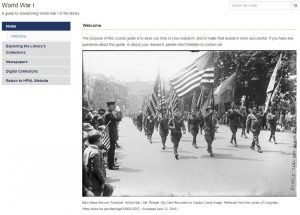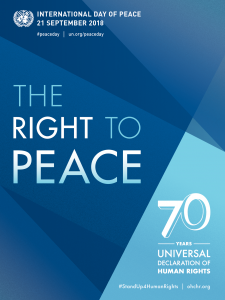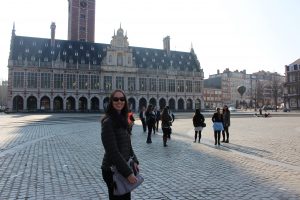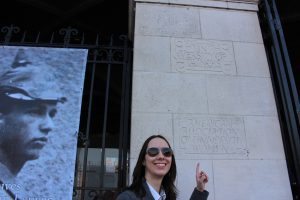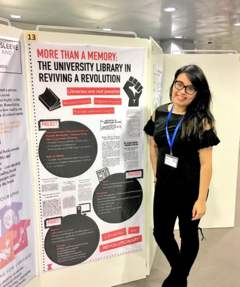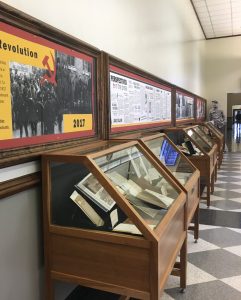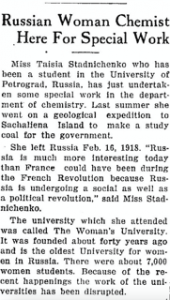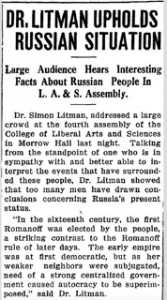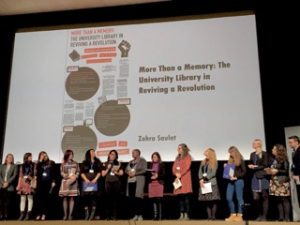This past weekend was the kick-off for the NEA Big Read* of Jhumpa Lahiri’s The Namesake. Between the tasty samosas and snacks, the vibrant exhibit, the invigorating keynote address, and the friendly crowed comprising campus and local community members, the kick-off event provided a glimpse of what all is to come over the course of the next six weeks.
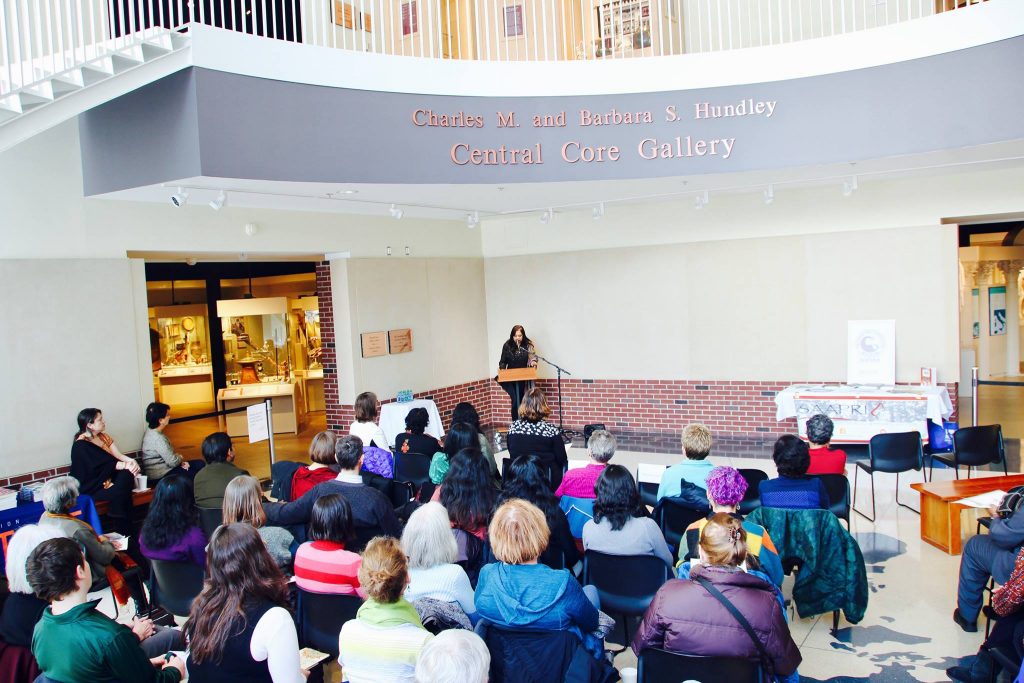
Dr. Koeli Goel gives remarks at the kick-off event at the Spurlock Museum for the NEA Big Read on Jhumpa Lahiri’s “The Namesake”. Photo credit: Dr. Koeli Goel
The International and Area Studies Library is one of collaborating institutions working to provide 35 programs through February and into March to celebrate The Namesake and themes such as South Asia, diaspora, culture, immigration, and identity. Other partnering organizations include the Spurlock Museum, the Champaign Public Library, the Urbana Free Library, the Art Theater, the Illinois Program for Research in the Humanities, the Center for South Asian and Middle Eastern Studies, and more.
While all of the programs are free and open to the public (and all are worth attending) we would like to highlight the events being planned by the International and Area Studies Library so that our devoted readers and fans can come out and support us. So mark your calendars for the following exciting events:
- Monday, February 4: “IPRH at The Art Screening: Mississippi Masala”. 7pm at the Art Theater in Champaign. A screening of Mississippi Masala (dir. Mira Nair, 1991), with a discussion led by Dr. Rini Bhattacharya Mehta (Comparative and World Literature/Religion) to follow.
- Wednesday, February 6: “Chai Wai Panel Discussion: Representation, Culture, and Identity in Popular Culture”. 2-3:30pm in the International and Area Studies Library (IASL) on the third floor of the Main Library building. Panelists include: Dr. Maryam Kashani, Kofi Bazzell-Smith, Professor Stacey Robinson, and Dr. Angela Williams. Refreshments will be served!
- Wednesday, February 13: “Indian Comics Chat & Chaat”. 12-1pm in IASL. Enjoy free samosas provided by Bombay Market and peruse a curated selection of comics from UIUC’s renowned Indian comics collection.
- Thursday, February 21: Book Club. 12-1pm in IASL. Tea and cookies will be served! Featured discussant: Susmita Das
- Thursday, February 28: Book Club. 12-1pm in IASL. Enjoy free samosas provided by Bombay Market! Featured discussant: Dr. Koeli Goel
- Thursday, March 7: Book Club. 12-1pm in IASL. Tea and cookies will be served! Featured discussant: Dr. Rajeshwari Pandharipande
- Saturday, March 9: Books & Brews Book Club at Riggs Brewery. 3-4pm. Beer and soft drinks are available for purchase!
Thanks to the generous support of the Dean of the Libraries, John Wilkin, and Mr. Pappu Patel of Bombay Market we are able to provide free refreshments at all of the events happening in the International and Area Studies Library. Events happening at other locations will have food and drinks available for purchase.
In addition to all of these wonderful events, there will also be two ongoing exhibits in the library throughout the month of February. Check out the first exhibit in the Marshall Gallery on the first floor of the Main Library building and then come up to IASL on the third floor to check out a second exhibit.
Please note that you do not have to have read the book in order to participate in any or all of these events. If you do want your own copy of the book, the International and Area Studies Library still has a few free copies to give away. If you have any questions or feedback about the programs, please feel free to be in touch with South Asian Studies & Global Popular Culture Librarian Mara Thacker (mthacker@illinois.edu), who is organizing the programs for IASL. Finally, if you are participating or following along on social media please tag us with #CUBigRead !
Happy reading!
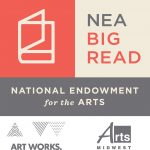 *NEA Big Read is a program of the National Endowment for the Arts in partnership with Arts Midwest.
*NEA Big Read is a program of the National Endowment for the Arts in partnership with Arts Midwest.


